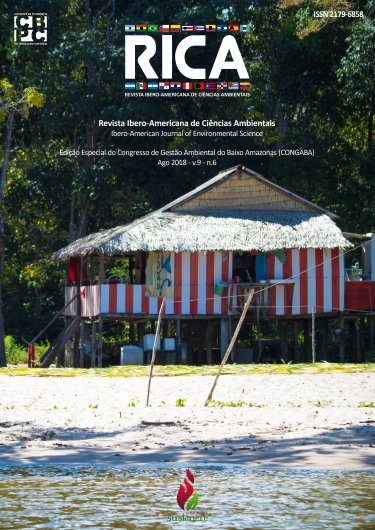Hydrological and environmental characterization of a small basin of the lower Tapajós River (AM)
DOI:
https://doi.org/10.6008/CBPC2179-6858.2018.006.0002Keywords:
River basin management, Water quality, Riparian forestAbstract
Watershed is considered as an area naturally bounded by topography and drained by a connected system of watercourses. Due to anthropogenic activities, these basins are altered and uncharacterized, undergoing profound changes in their aquatic and terrestrial structures. To characterize a small watershed belonging to the Tapajós River drainage system, five sampling points were adopted along the Igarapé São Braz Basin. Morphometric data of the watershed, canopy opening and habitat integrity were collected; the physical-chemical water and structural parameters of the canal were collected over three periods of the seasonal cycle. The São Braz watershed has an area of approximately 234,738km² and a circular shape. Hydrological and limnological characteristics show spatial and temporal variation, without a consistent pattern over time. The stochasticity observed may be due to differences in the intensity and origin of the environmental degradation promoting processes in the studied hydrographic springs. The habitat integrity index was able to determine the state of degradation of the studied streams in the São Braz watershed, where only two springs were determined as intact. The results obtained in this study reinforce the importance of planning actions to prevent degradation in environments considered to be healthy and to minimize and reverse sources of impact that promote the degradation of the São Braz Basin.
Downloads
Downloads
Published
Issue
Section
License
The CBPC - Companhia Brasileira de Produção Científica (Brazil CNPJ: 11.221.422/0001-03) the material rights of the published works. The rights relate to the publication of the work anywhere in the world, including rights to renewals, expansions and dissemination of the contribution, as well as other subsidiary rights. All electronically published works may subsequently be published in printed collections under the coordination of this company and / or its partners. The authors preserve the copyright, but are not allowed to publish the contribution in another medium, printed or digital, in Portuguese or in translation.









